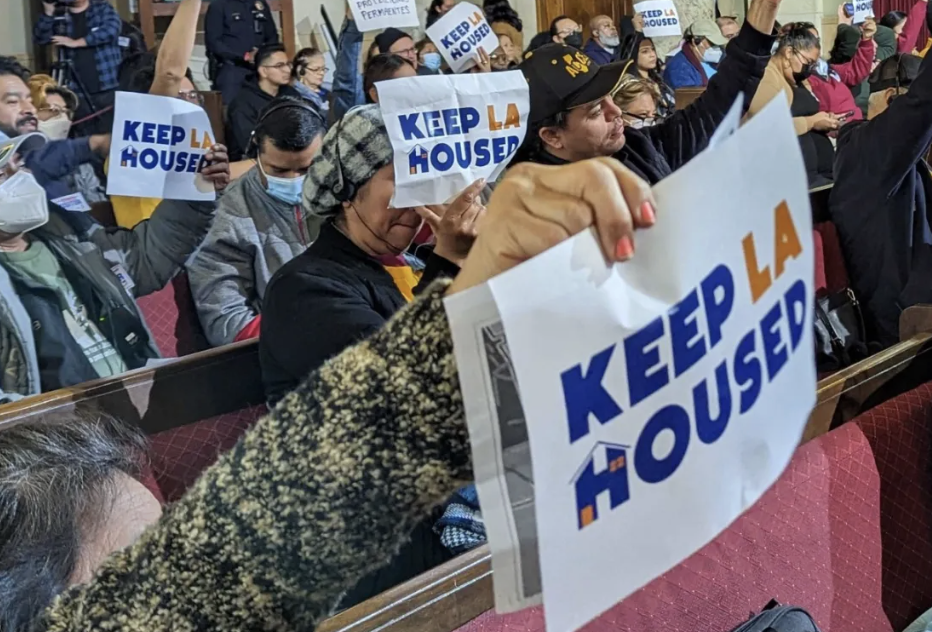Los Angeles has approved a major change to its Rent Stabilization Ordinance, the first significant update to the system in more than forty years. The amendment alters how much landlords can raise the rent each year on apartments covered by the ordinance, which applies to units built before October 1978. Advocates say the change is an important step toward protecting renters in a city where housing costs have risen sharply and wages have not kept pace.
The Rent Stabilization Ordinance was adopted in 1979 after years of community pressure over rising rents and displacement. At the time, LA joined a small group of cities that had adopted rent regulation systems in response to rapid population growth, speculation, and a widening gap between incomes and housing costs. The law established limits on annual rent increases for most older rental buildings in the city. The original formula allowed landlords to raise rents each year by an amount tied to inflation, but it also included a built-in floor to guarantee a minimum allowable increase even in low inflation years.
The details of the formula were modified several times in the 1980s but remained largely unchanged for decades. The long standing system permitted annual rent increases ranging roughly from 3 percent to 8 percent depending on inflation, and up to 10 percent if a landlord paid for gas and electricity. Tenant groups have long argued that the combination of rising housing costs, stagnant wages, and minimum guaranteed rent increases contributed to significant instability for low income renters.
The new amendment represents the most substantial revision since 1985. Under the change, the allowable increase will be tied to 90 percent of the Consumer Price Index, with a maximum cap of 4 percent and a minimum floor of 1 percent in most years. In higher inflation years, increases that previously could reach 7 or 8 percent will now be limited to 4 percent. In very low inflation years, the floor will drop from the long standing 3 percent guarantee to 1 percent. The amendment also eliminates the separate utility add-on that allowed landlords to impose an additional 1 or 2 percent increase if they paid for certain utilities. The change lowers the permitted range but does not remove the floor entirely, which had been a major goal of tenant advocates.
Supporters of the amendment argued that the old formula no longer reflected economic reality. Keep LA Housed, a coalition of tenant unions, nonprofit organizations, and legal aid groups, said in a letter to elected officials that Los Angeles had one of the weakest rent caps in the state and that the existing framework contributed to hardship for long term tenants. The coalition cited data showing that more than half of tenants in Los Angeles spend over 30 percent of their income on rent, while tens of thousands spend far more. They argued that tightening the cap was necessary to prevent displacement and to help stabilize communities at a time when many renters are still recovering from the financial impacts of the pandemic and the regional cost of living crisis.
Landlord groups opposed the change, saying the new cap will make it more difficult to maintain older buildings. They pointed to rising insurance costs, higher property taxes, and expensive health and safety requirements that have grown more costly over time. The debate over the amendment reflects a broader shift in housing policy both in Los Angeles and nationwide. Cities across the country, including New York and Minneapolis, have seen renewed pressure for stronger tenant protections in response to rising rents and the threat of displacement. Local advocates cite this trend as evidence that Los Angeles is part of a larger movement for stronger rent regulation.
Although the amendment is a significant change, it does not adopt all the reforms tenant advocates sought. Tenants had pushed for a lower maximum increase, a true zero percent floor in years of low inflation, the full elimination of rent banking, and broader application of the ordinance to newer buildings. They also called for stronger oversight of evictions, citing concerns that landlords might seek to remove long term tenants in order to reset rents to market rate under vacancy decontrol rules. Those proposals were not included in the Council’s final action, leaving many long standing issues for future debate.

